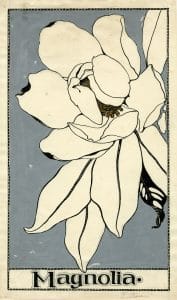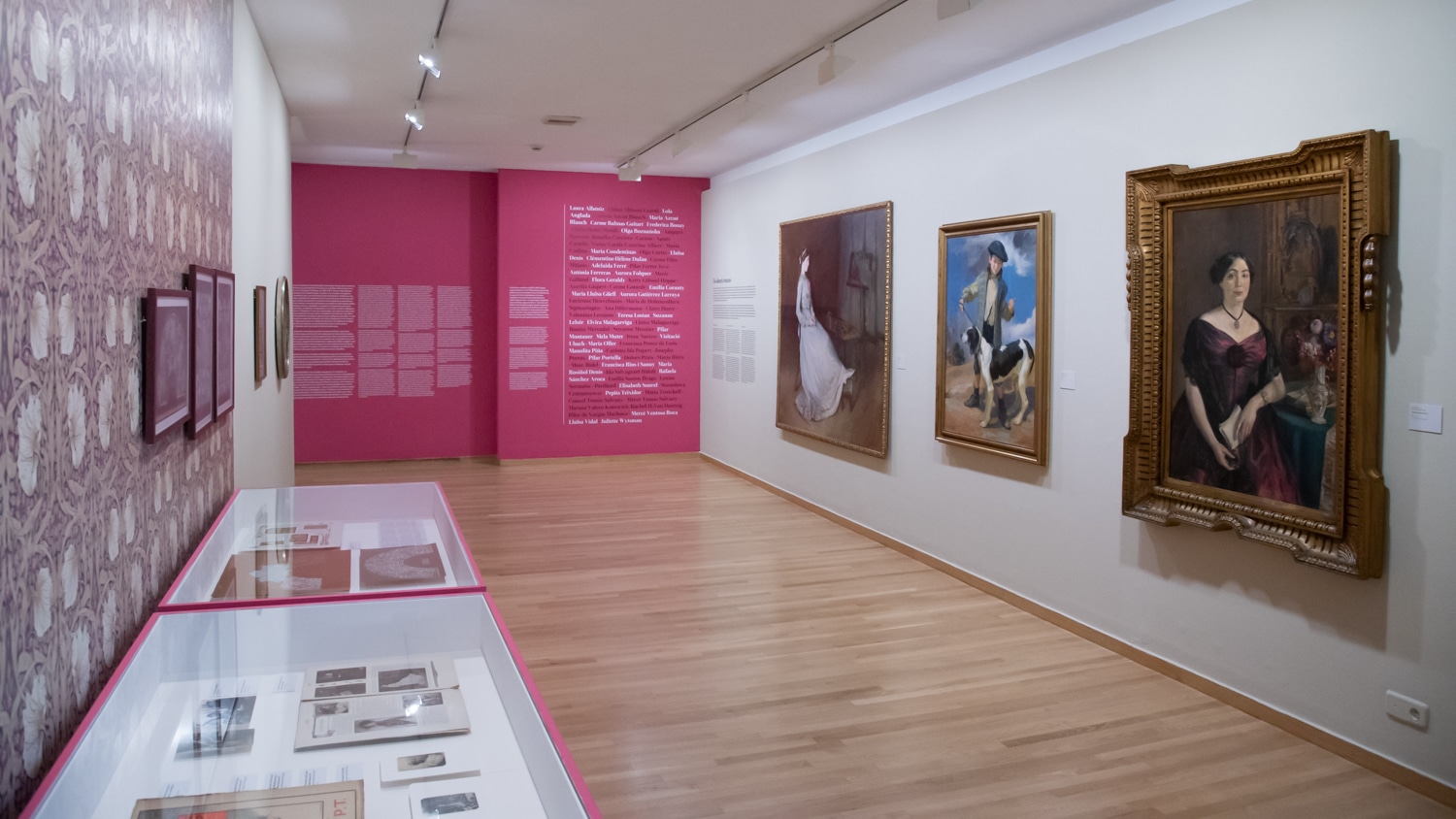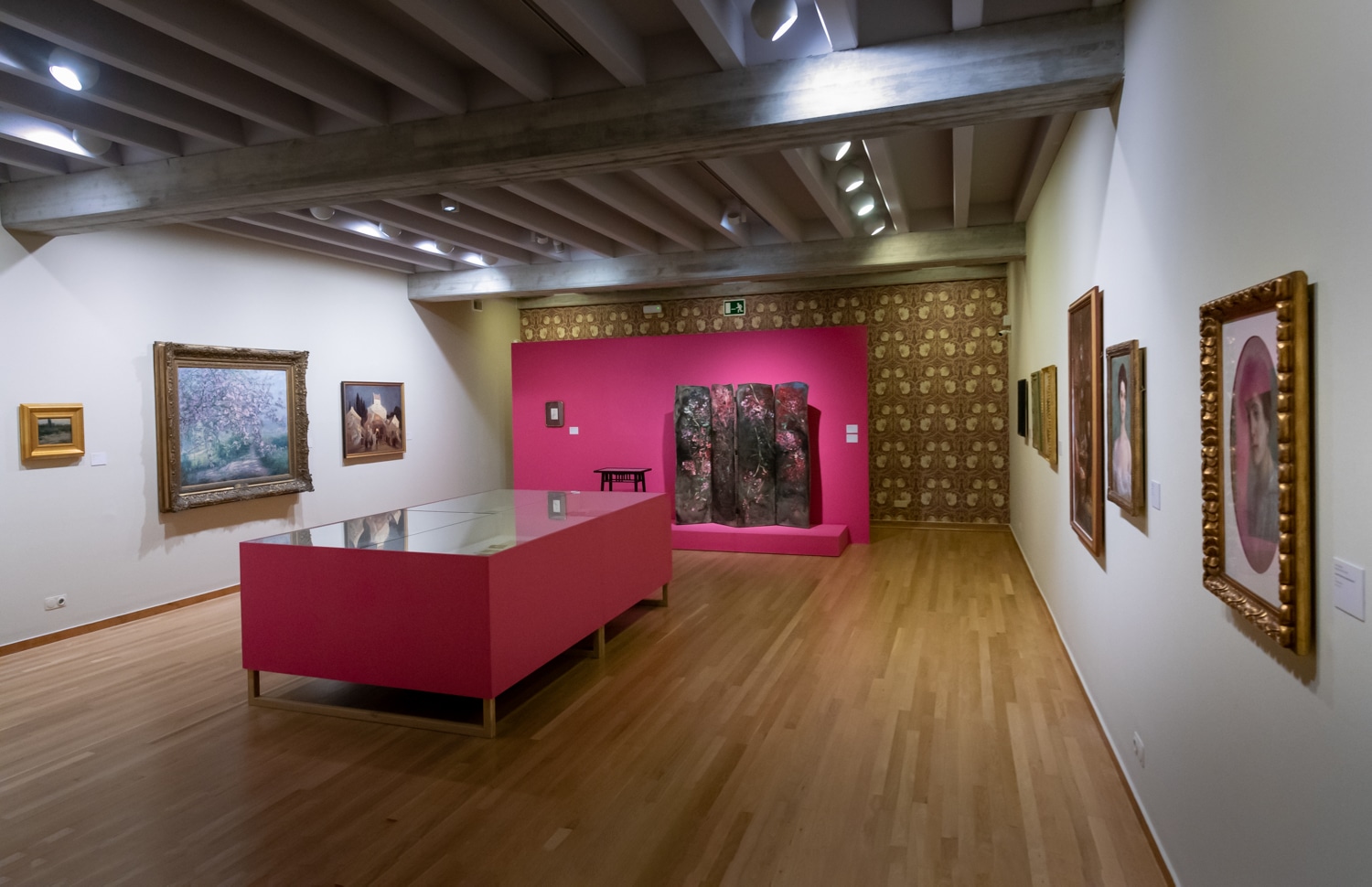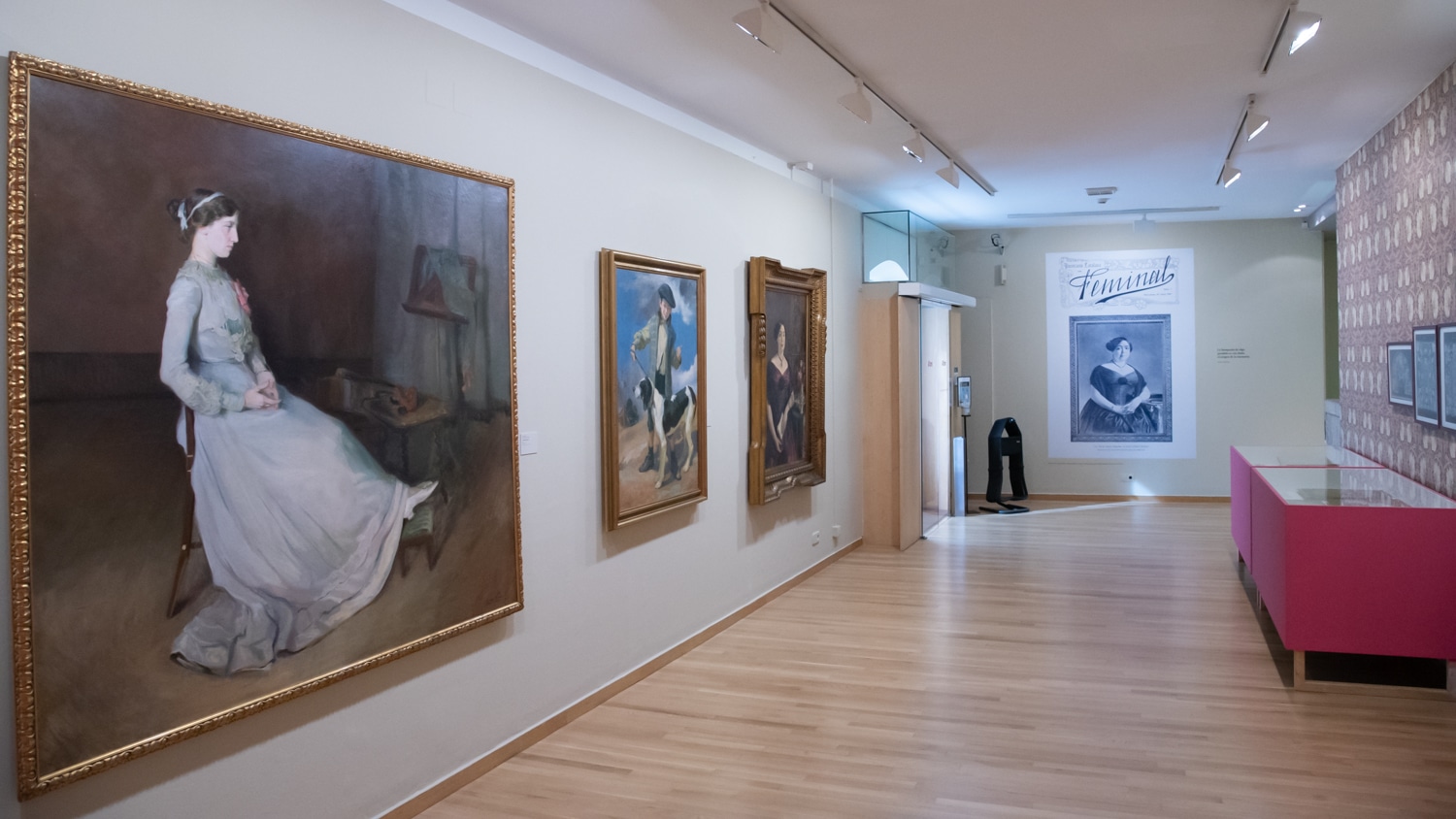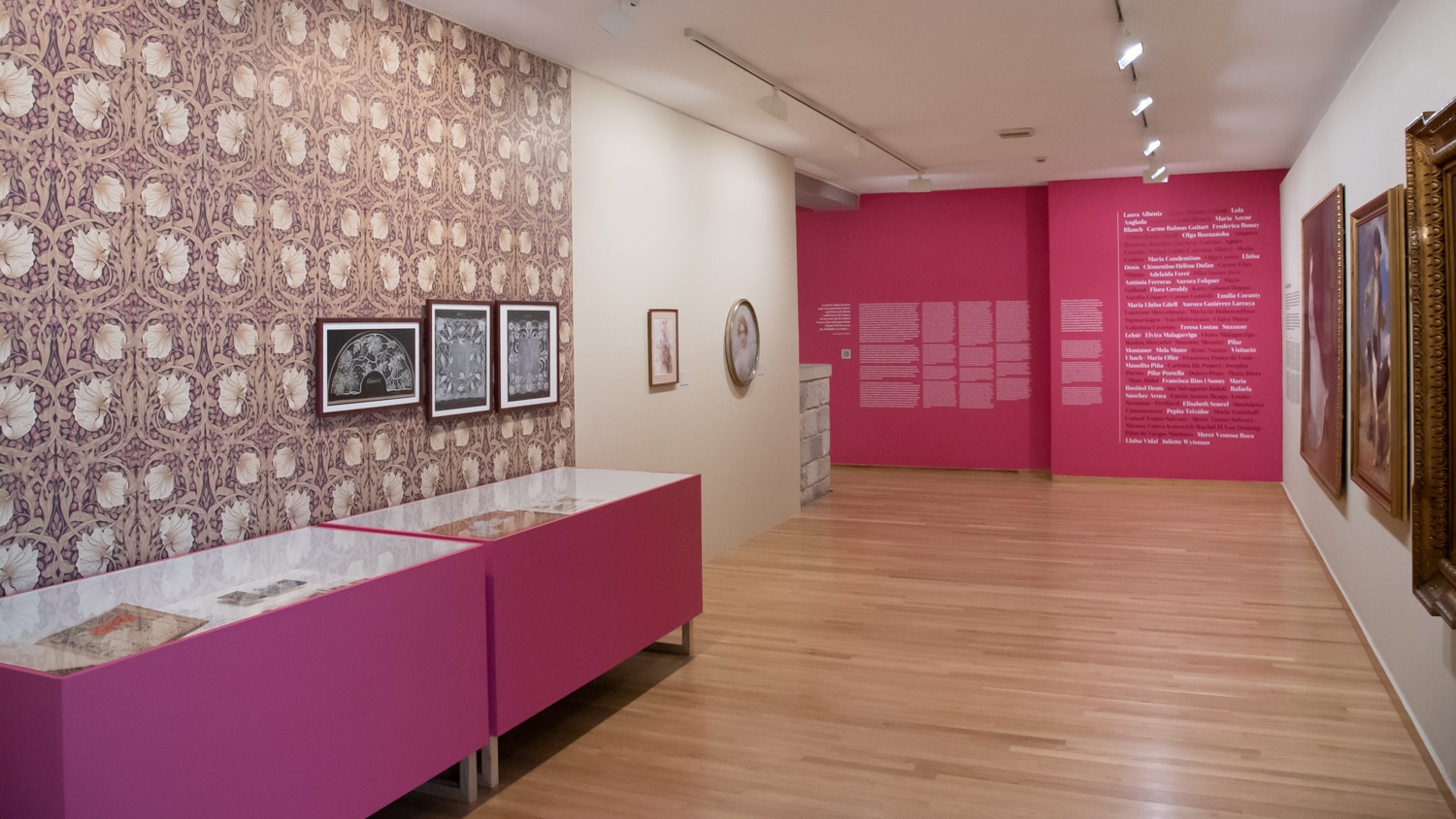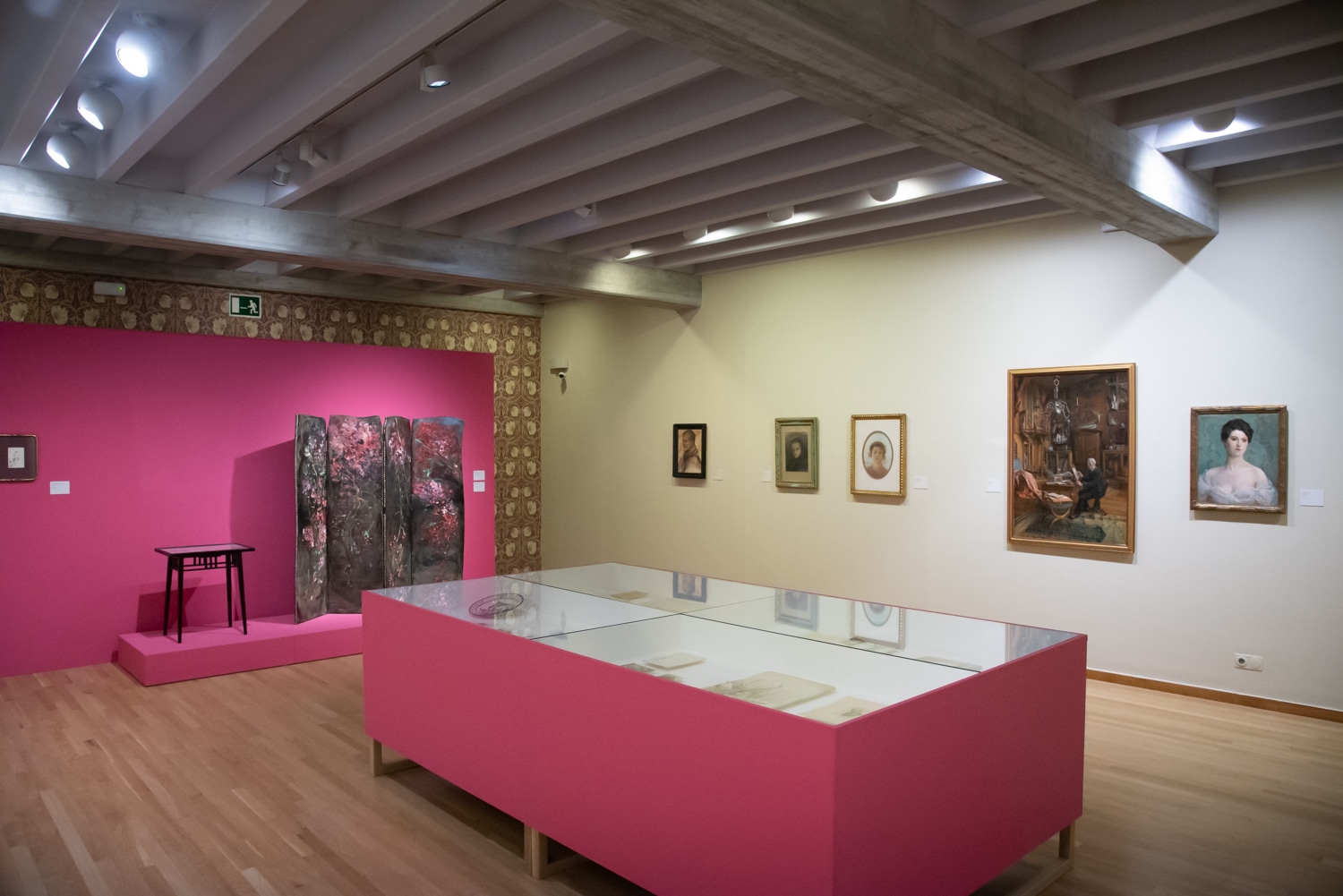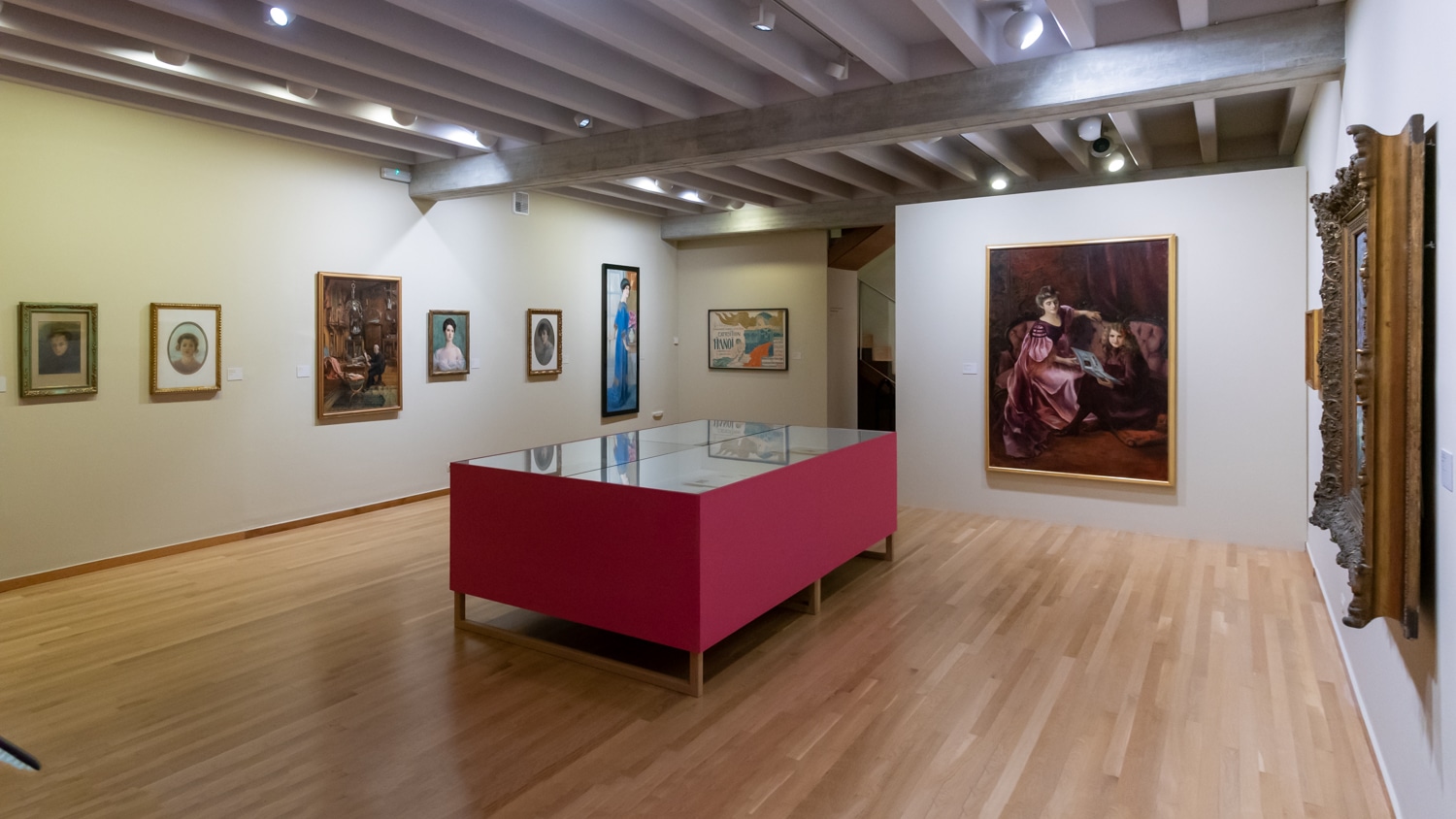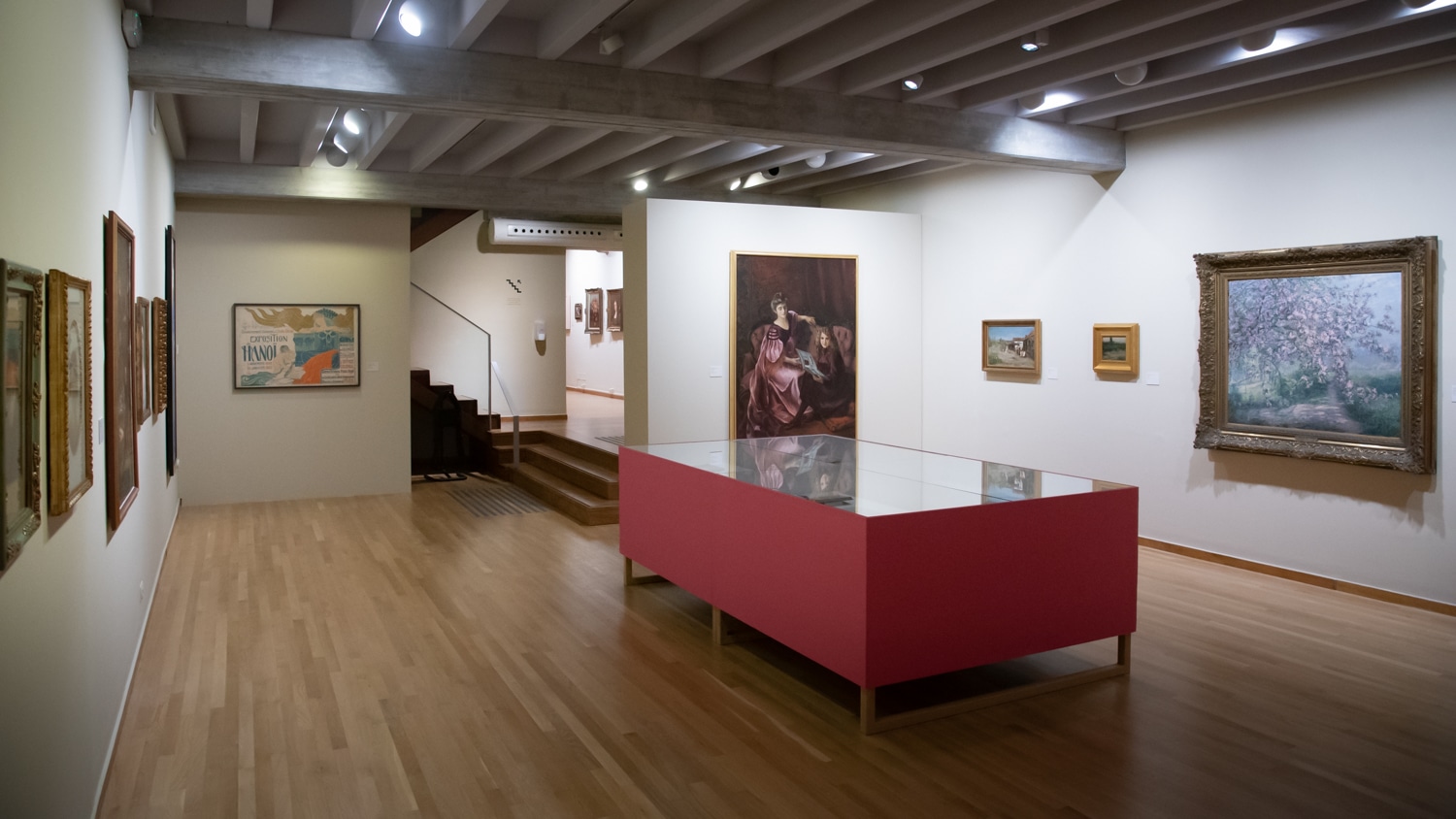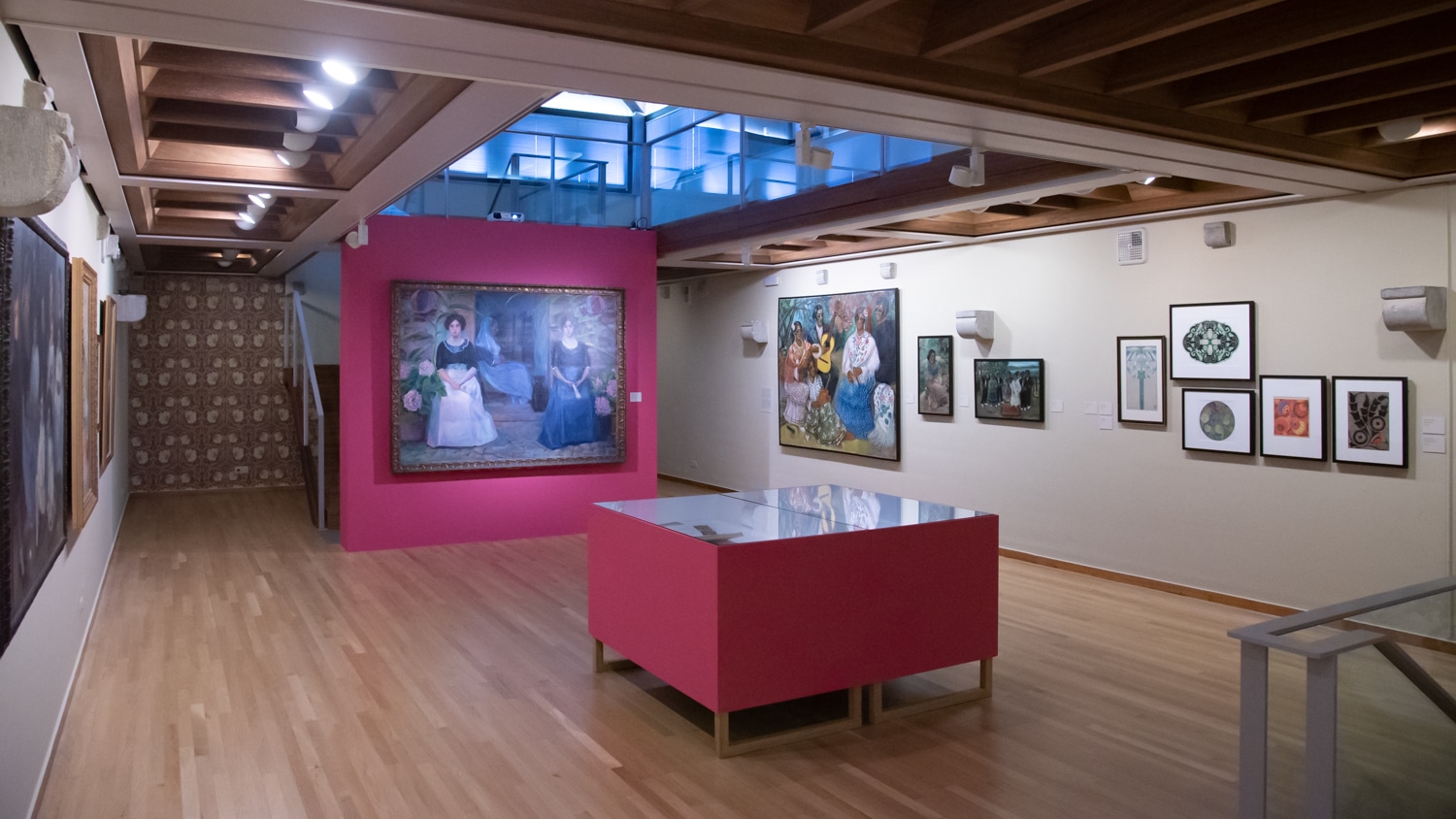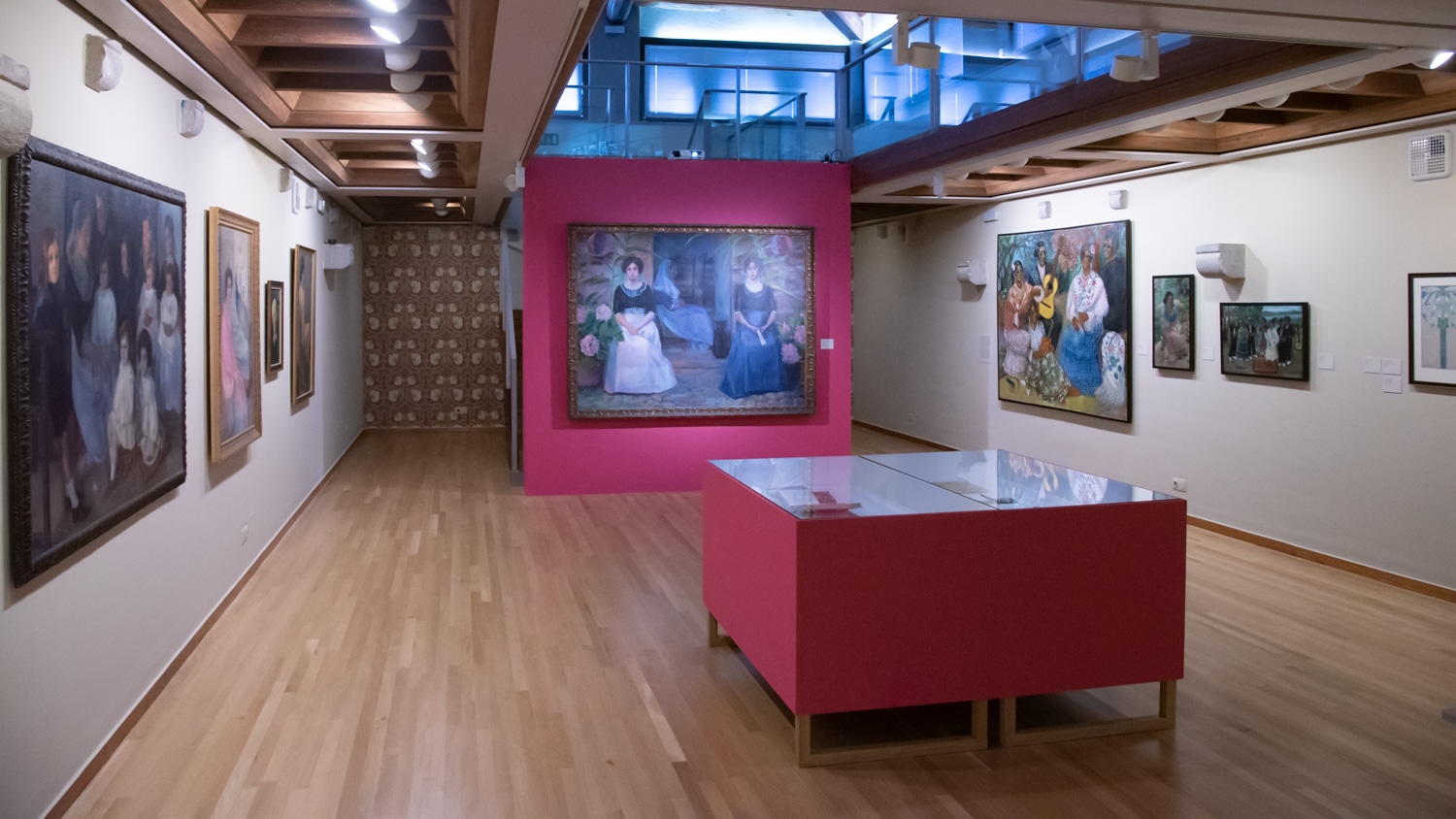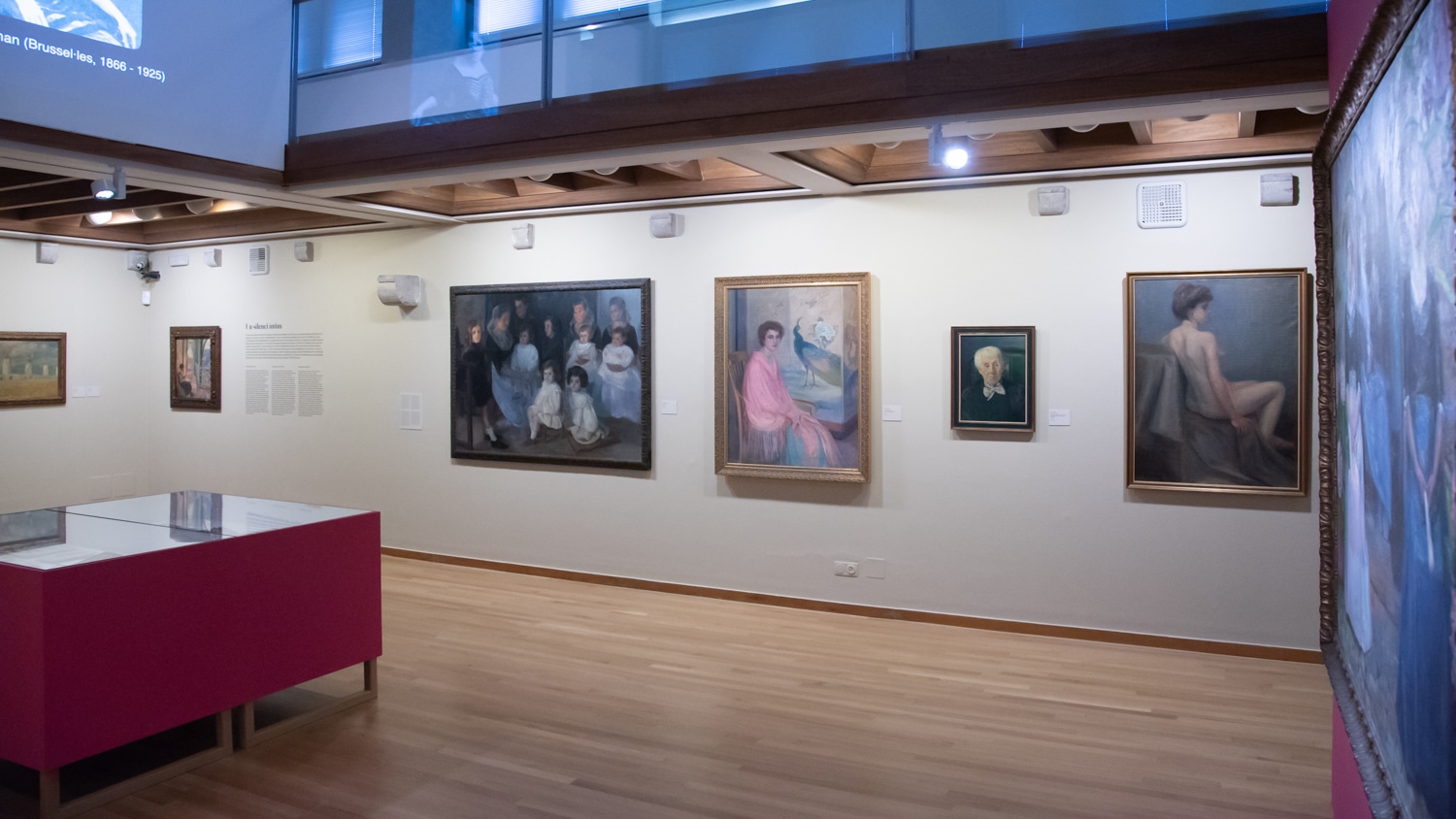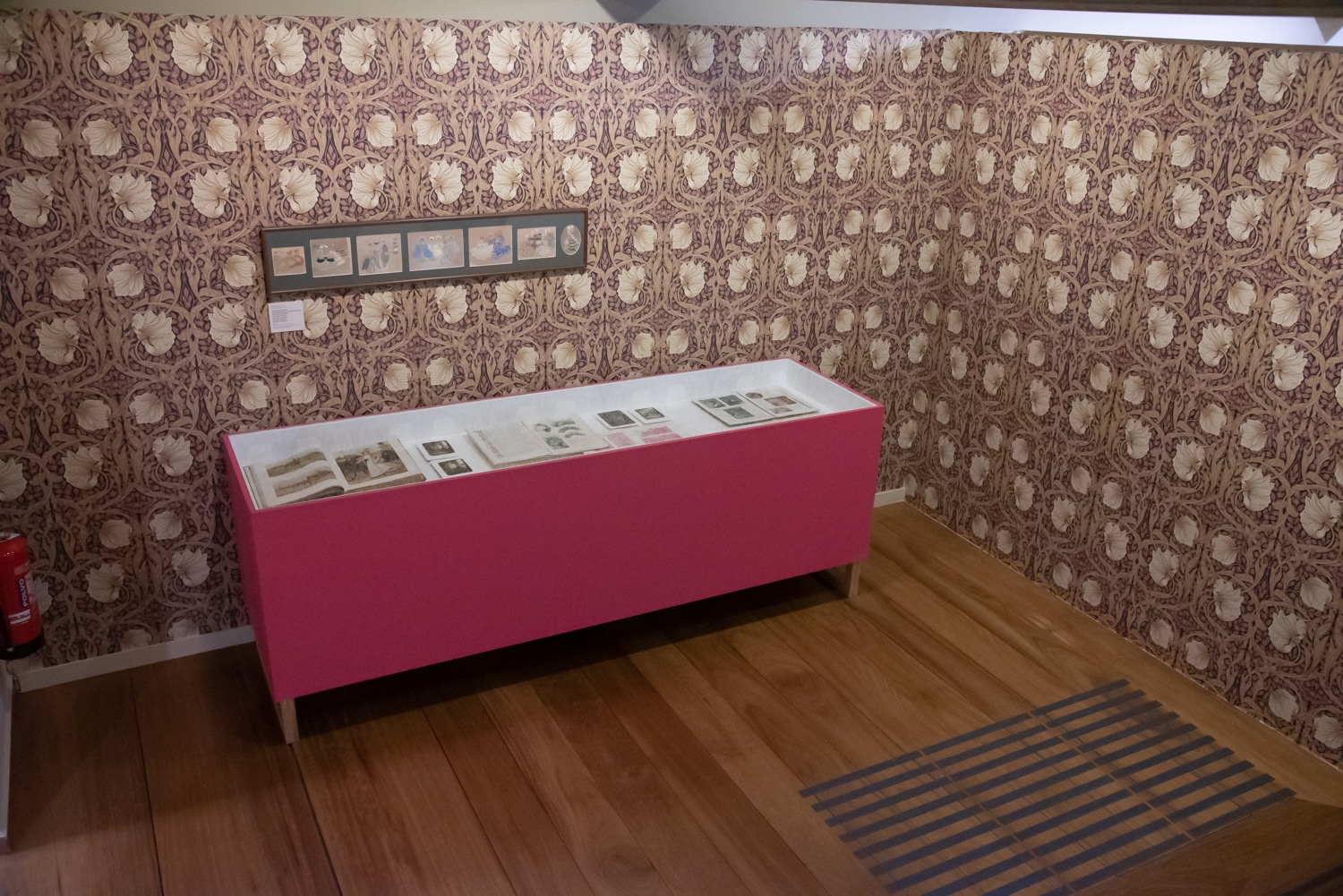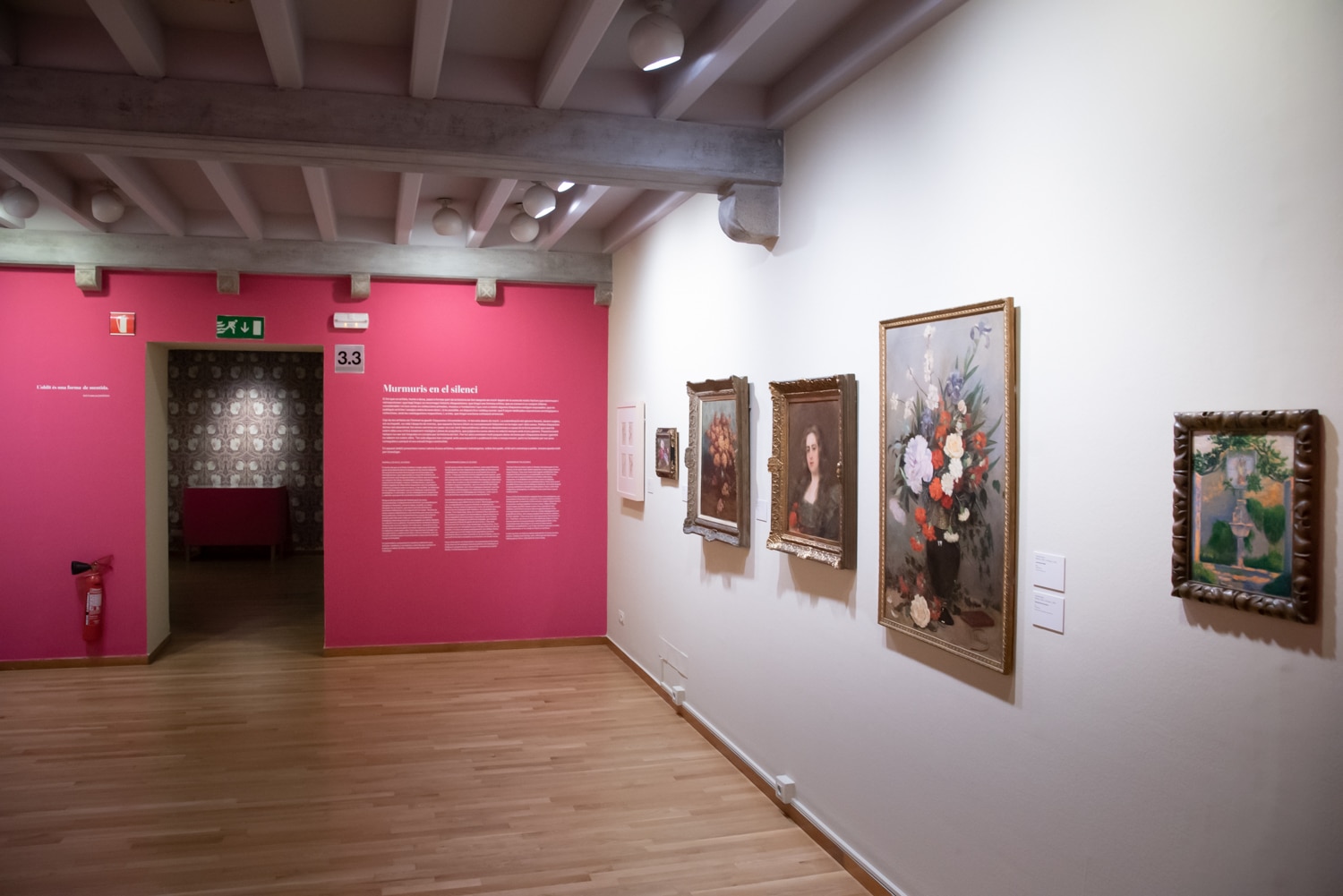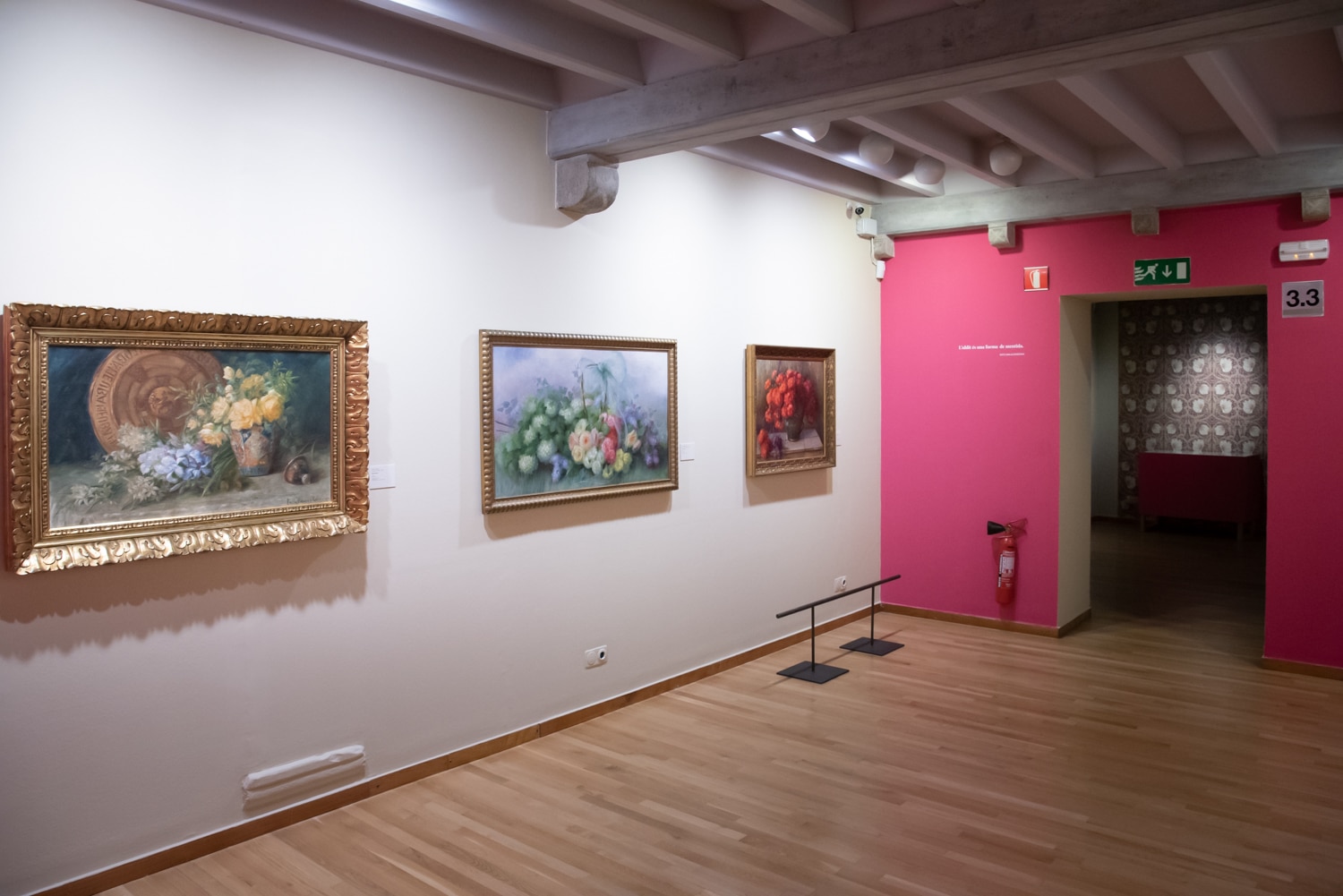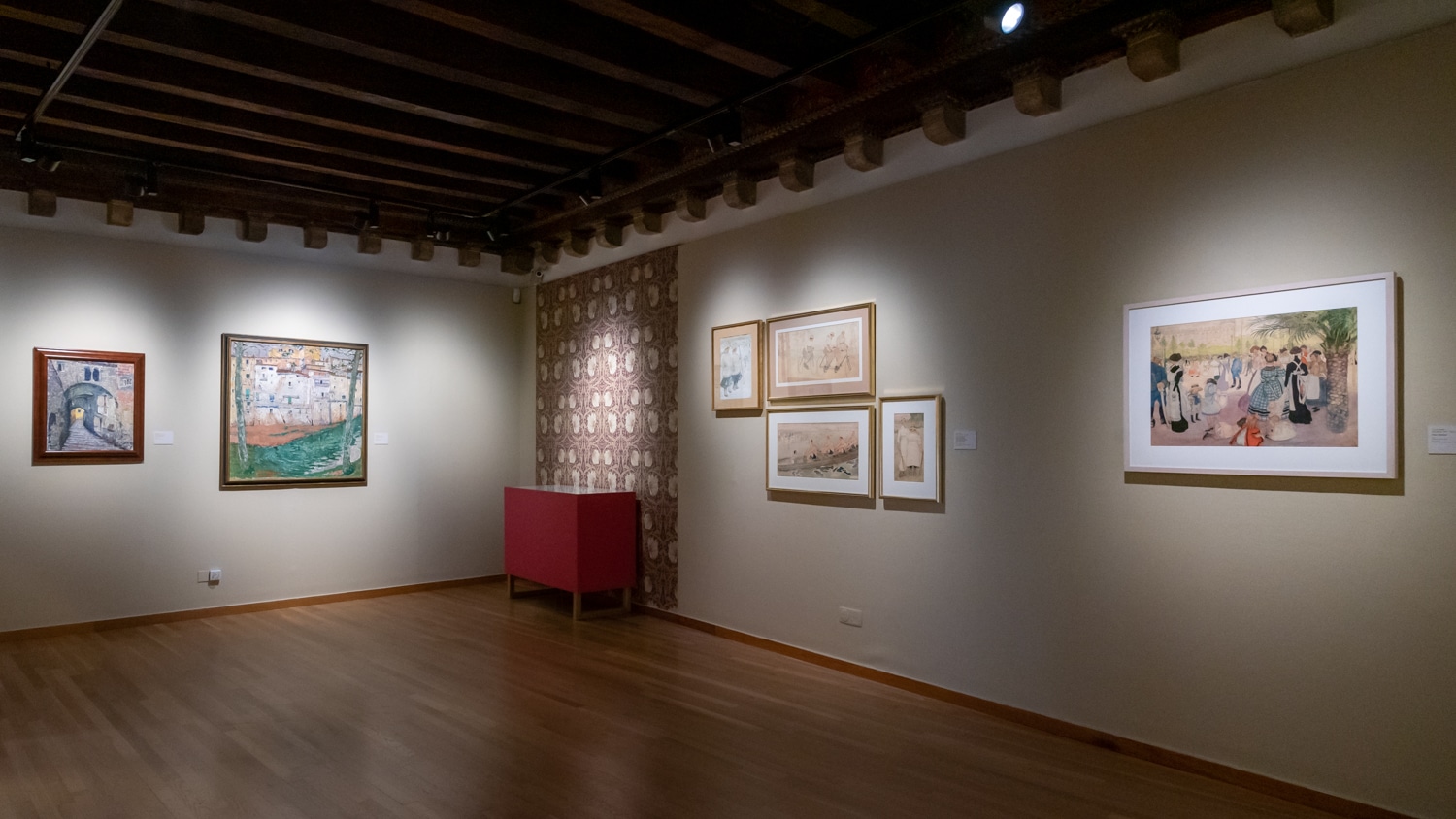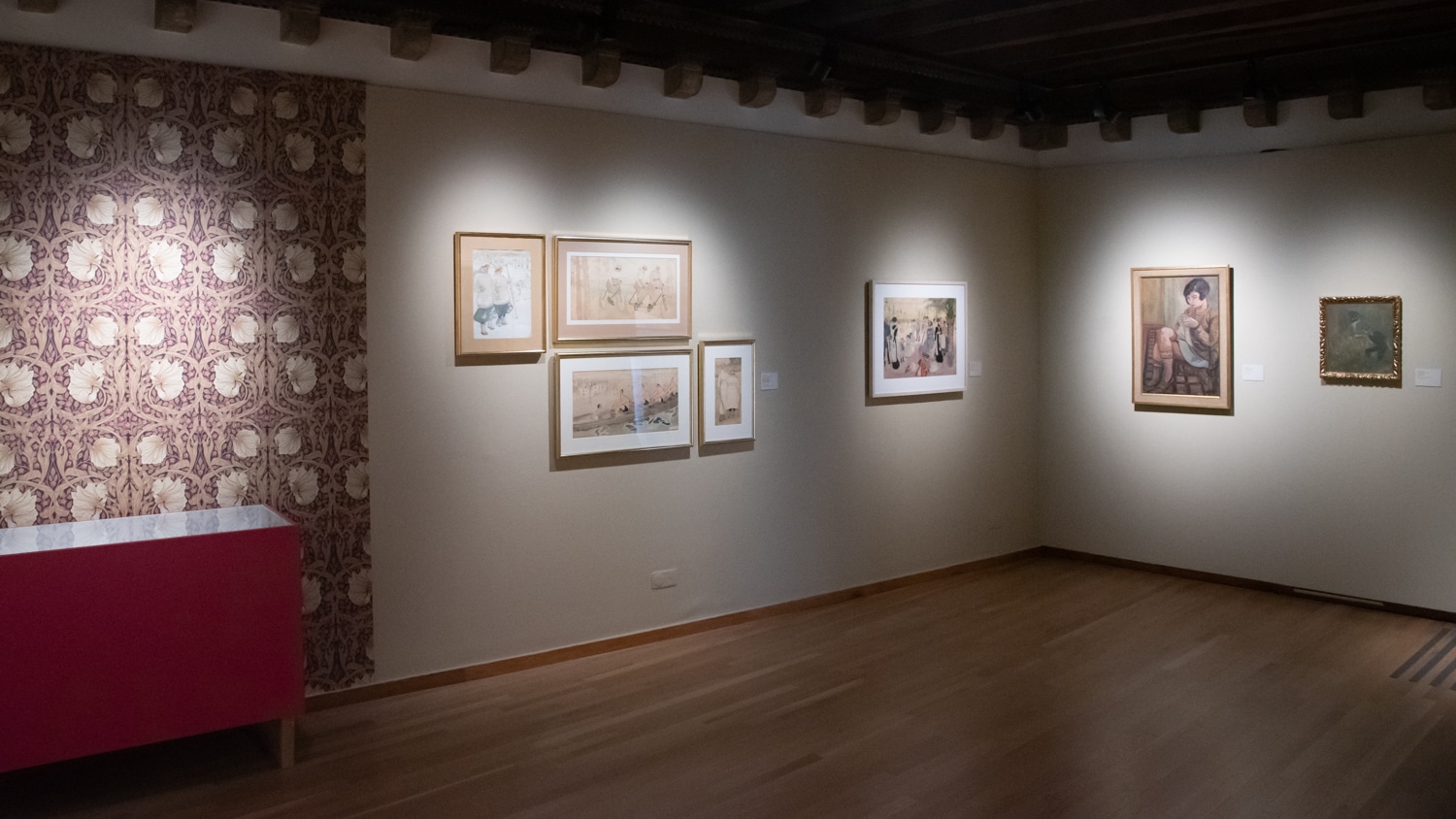Feresa de silenci. Les artistes a la revista Feminal (1907-1917)
From : 22 th October 2022 to 26 th February 2023
Opening: Saturday 22th October
Curator: Elina Norandi
Preduction: Museu d’Art de Girona
Presentation
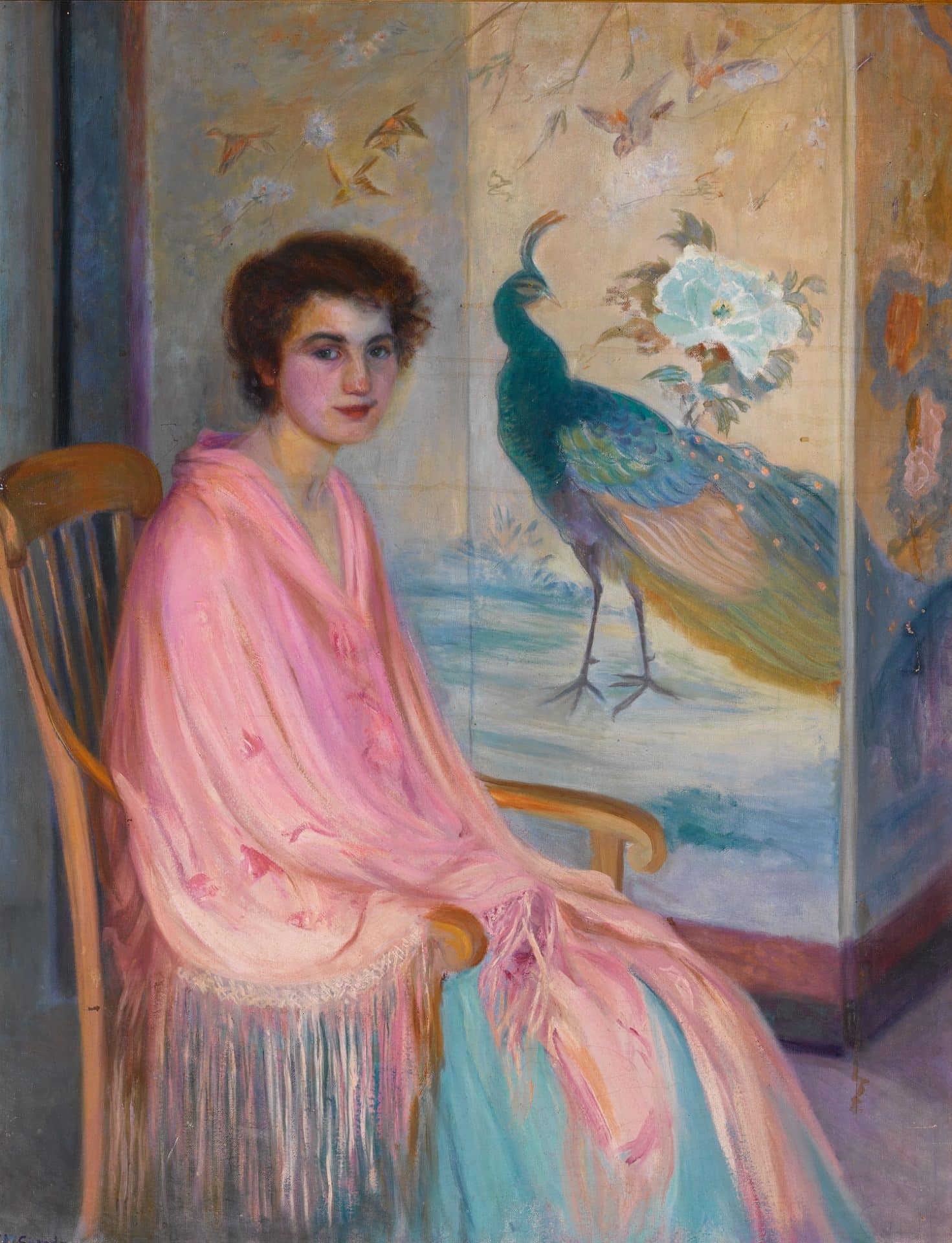
Pilar Montaner. Next to the Paravent (The Model or Sa Pollensina). 1908. Oil on canvas. 116 x 90,5 cm. Private collection. Photo: David Bonet
Feminal was the first magazine edited and written by women to see the light of day in Catalonia. It was published monthly in Barcelona as a supplement to La Ilustració Catalana, from 1907 to 1917. It was promoted by women from the bourgeois and Catholic spheres and was inspired by similar magazines which, under the influence of the suffragist movement, were published in the major European cities. In almost all issues of the magazine, the visual arts were usually covered, either with articles about exhibitions of women artists of the moment or with monographic articles on one of them.
More than seventy Catalan and European women artists, mostly painters but also sculptors, poster artists, illustrators and, in smaller numbers, bookplate artists, enamellers or photographers were cited.
This exhibition revives nearly twenty women artists, with works from national and international museums and private collections. In many cases we only highlight and exhibit one, two or three works by artists we may never know anything about again. But the importance lies in showing that, despite all the obstacles, each was able to create their space of freedom in which to develop their artistic aspirations. Feminal was one of these spaces, in which they helped each other and found the strength and support that society did not yet give them.
L’estrella, Dolors Monserdà
“La nit ha cobert la terraamb son mantell de foscor,amb feresa de silencii amb feresa de remors.Tot un món ple de misteris’aixeca d’un món que dorm,i l’esperit de les serresper la buidor se remou.Amb l’aleteig de ses alescolors i perfils confon;posant encisants aromes dins cada flor que desclou.Bo i saltant la meva nétam’ha volgut seguir a l’hort;plançonet de nou anyadesfrisa per saber-ho tot.Los secrets de l’esteladali tenen robat lo cor;i es deleix per veure el Carrodibuixat amb punts de foc.Lo bell Camí de Sant Jaumel’encisa amb sos resplendors;mes la seva enamoradaés l’Estrella del Pastor.Tot mirant les meravellesque del cel la volta enclou,un estel l’ha traspassadacom un coet volador.La nena tota tremolai em diu encesa de goig:-Àvia ¡és l’infant que ens enviades del cel Nostre Senyor! “
Insubmissió (1947) Dolors Monserdà
No vull que em segresteu el pensament
dintre de fets o fórmules pactades;
vull, com les aus, les ales lliberades
per volar en tot moment,
ara a dreta, ara a esquerra, per l’espai
ple d’infinites rutes invisibles;
no hi vull destorbs forans, límits noïbles
que a bestreta m’imposen un camí.Vull ésser plenament mestre de mi
i no un esclau de forces alienes,
en tant que humanes, míseres, fallibles;
vull les facultats plenes
servar de mon privat discerniment
i en mi respectar furs
que en els demés respecto sens protesta.Anorreada o xalesta,
amb jorns plàcids o durs,
vaig rebre de Déu la meva vida
i comptes sols a n’Ell li’n vull donar
i sols d’Ell vull estar a l’alt manar
i sols d’Ell rebre lleis i pauta i mida,
sense manifassers per entremig
que amb matusser trepig
de mes oracions la pau violin
i que mentre ells volin
a mi vulguin privar-me de volar.Qui per son diví antoix me va crear,
alhora performava mon destí;
i així, del Qui
per mi és tot jo i jo tot d’Ell
sols vull sofrir el rigorós cinyell,
sols vull estar al franc servir,
del jorn de ma naixença
fins al jorn de morir.
BROKEN SILENCES
La búsqueda de algo perdido es, sin duda, el origen de la memoria.
María Zambrano
Some women artists, not many, have broken the silence and have begun to be recognised. This is the case of Lluïsa Vidal, Lola Anglada, Pepita Teixidor and Laura Albéniz. All of them were able to become professionals because, far from finding obstacles or restrictions in their own family, they enjoyed their support or simply did not marry and have children. As young people, they were able to move to Paris, a key place for art at that time, to continue their training. The city opened up a new world to them, they were able to experience living alone, they gained personal security and they entered the newest art environments that must have nurtured their talent. Moreover, the large number of works that have been preserved has helped us to study them and subsequently make them better known.
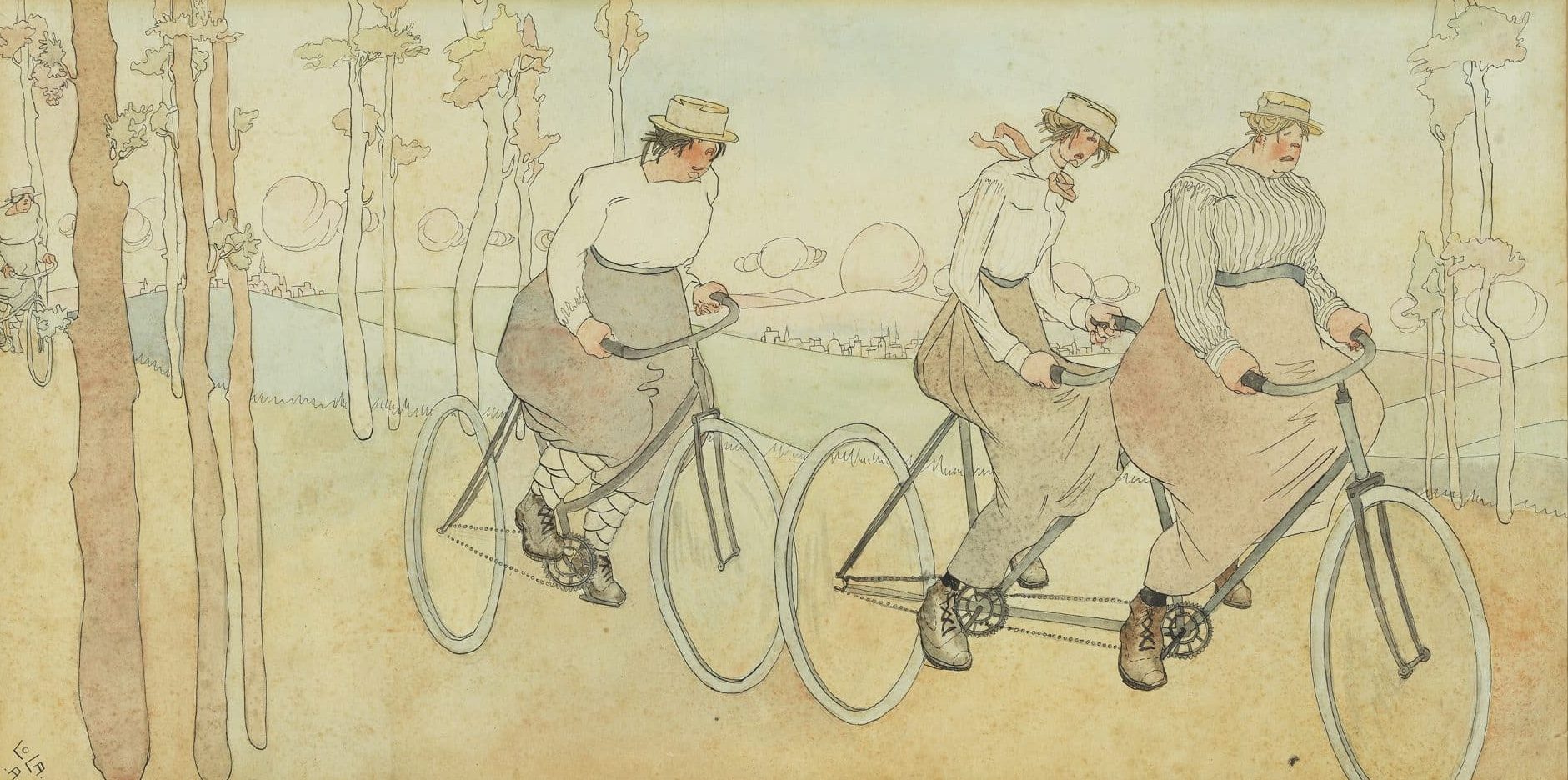
Lola Anglada, Land Sport (Bicycle). c. 1911. Ink and watercolour on paper, 50 x 78,5 cm. Fundació Barcelona Olímpica – Museu Olímpic i de l’Esport J. A. Samaranch. Photo: FotoGasull
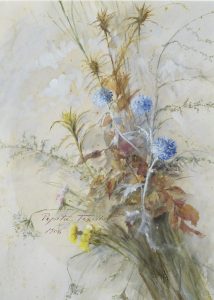
Pepita Teixidor, Thistles. 1906. Watercolour on paper, 48 x 37 cm. Private collection. Photo: FotoGasull
WHISPERS IN THE SILENCE
L’oblit és una forma de mentida.
Svetlana AleksiévitxCal registrar totes aquestes vides infinitament fosques.
Virginia Woolf
The fact that an artist, male or female, becomes part of the history of art after their death depends on the conjunction of many factors: they must have had regular exhibitions; have enjoyed critical fortune; a considerable set of their works must survive in good condition in private collections, museums or foundations and at least some on display; articles and essays must be published about their work and if possible there must be a catalogue raisonné; and anthological or group exhibitions should be dedicated to them, with their respective cataloguing. In addition, they must have a good market price. None of the Feminal artists enjoyed these circumstances, not even before they died. For centuries, the subordination of
the female gender prevented, in life and after death, these factors of success coming together in most cases. Many of these women gave up their careers when they married or had children, and others became discouraged because of the strong pressure exerted on them by wholly misogynistic and prejudiced critics, who always judged their works in relation to
their gender. They were later also ignored by the history of art.

Juliette Wytsman, Apple Tree on Blossom. 1906. Oil on canvas. 101 x 121 cm. Museum voor Schone Kunsten, Gant (Bèlgica). Photo: www.artinflanders.be / Hugo Maertens
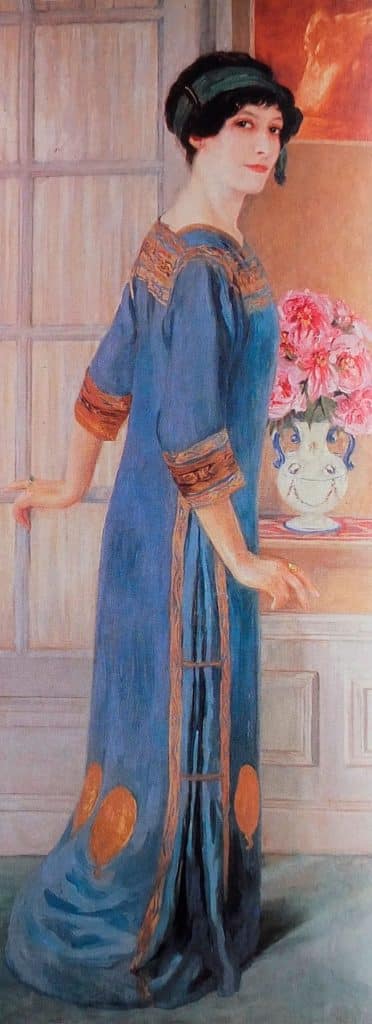
Clémentine-Hélène Dufau, Self-portrait. 1911. Oil on canvas. 180,5 x 70,2 cm. RF 1978-40. Paris, Musée d’Orsay, depot at Villa Arnaga, Maison Edmond Rostand, Cambo-les-Bains. Photo: © Musée d’Orsay, Dist. RMNGrand Palais / Patrice Schmidt
AN INTIMATE SILENCE
No vull que em segresteu el pensament
dintre de fets o fórmules pactades;
vull, com les aus, les ales lliberades
per volar en tot moment,
ara a dreta, ara a esquerra, per l’espai
ple d’infinites rutes invisibles […].Caterina Albert (Víctor Català): «Insubmissió»
Preserving the memory of women artists depends, most of the time, on their descendants loving art and wanting to preserve their works; unfortunately, however, it is not always possible: changes of residence, not valuing their ancestor or simply a lack of financial resources or space have meant that the works end up being sold cheaply or, in the worst of cases, thrown away. But there are also families who have lovingly kept and taken care of works and memories, regardless of the artist’s reputation and their value in the market. These families carry out silent but essential work that, most of the time, is not rewarded with any help or public assistance. And they are waiting for someone, a history of art expert, to take an interest in breaking the silence and shedding light on the life of their ancestor and the works in their possession. This is the case of three artists who, as an example, we feature in the exhibition: Francisca Rius i Sanuy, Aurora Folquer and Pilar Montaner.
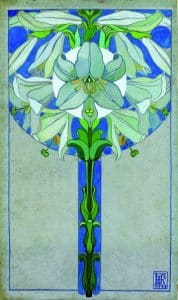
Francisca Rius i Sanuy, Lily. 1914. Gouache on paper. 66 x 40 cm. Private collection
